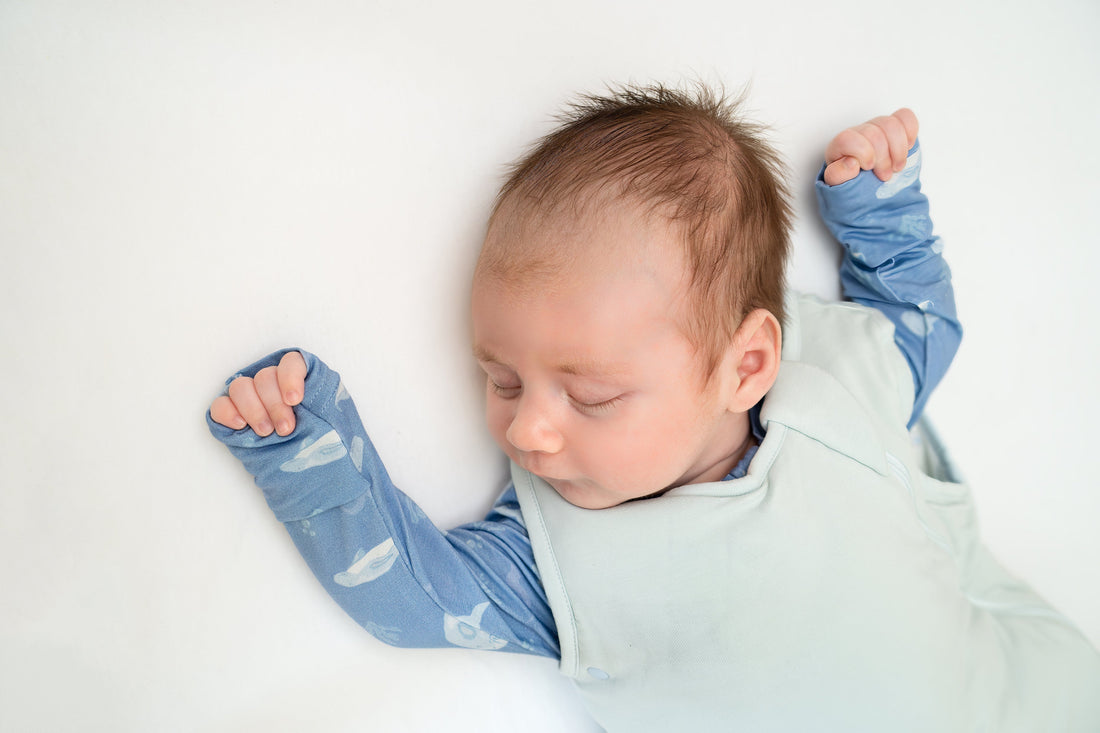
When Should I Use a Baby Sleep Bag
Share
A baby sleep bag, also known as a sleep sack or a wearable blanket, is a safe and convenient way to keep your infant warm while they sleep. Unlike loose blankets and quilts, which can accidentally cover a baby's face and pose a suffocation risk, wearable blankets like a sleep bag or swaddle are designed to fit snugly around the baby's body. This eliminates the risk of the baby pulling the fabric over their face during sleep.
Baby sleeping bags can also help maintain proper temperature while sleeping when using an appropriate TOG with correct layering of clothing, instead of piling on extra blankets which could be a safety hazard.
The American Academy of Pediatrics (AAP) recommends the use of wearable blankets like baby sleep bags to reduce the risk of Sudden Infant Death Syndrome (SIDS) and other sleep-related accidents. As they recommend that your baby’s crib has nothing loose in it apart from a tight fitted sheet until they’re over 12 months old, a baby sleep bag has been designed to keep your baby warm when they sleep without the common risks that come with using a loose blanket.
Most experts recommend waiting until your baby is at least a few weeks old and weighs around 4.5 kilograms (10 pounds) before using a baby sleep bag. This is because newborns need to establish their body temperature regulation, and it's important to avoid overheating or the risk of covering their face with the sleep bag due to their small size. Many parents tend to start using a baby sleep bag when their baby has transitioned from the swaddle (generally from 8 weeks + or if the baby starts exhibiting signs of rolling). However, they can be used from birth as long as the sleeping bag safely fits and will not cover the baby’s mouth - check out our size guide below.
Our Hushabye baby sleep bags are designed with your growing baby in mind. The size M and L sleep bags have poppers to adjust the length so it grows with your baby - meaning you don’t have to size up their sleeping bag for a while. Size S does not have the extendable option as during this stage of their life, your baby will most likely need at least one diaper change during the night, so the poppers would be one extra thing to fiddle with when unzipping your child for their nappy change.
To ensure safe and appropriate usage, follow the guidelines below:
- Size: Ensure that the sleep bag fits your baby properly. It should be snug around the neck and armholes to prevent your baby from slipping inside, or the sleep bag covering their face. However, it should also allow enough room for your baby to move their legs comfortably.
- TOG Rating: Baby sleep bags come in different thicknesses, often indicated by a TOG (Thermal Overall Grade) rating. Choose a sleep bag with an appropriate TOG rating for the current room temperature to prevent your baby from getting too hot or too cold. TOG ratings typically range from 0.5 to 3.5, with lower TOG ratings suitable for warmer weather and higher TOG ratings for colder environments. Check out our TOG guide to find what’s right for you.
- Room Temperature: Ensure that the room your baby sleeps in is at a comfortable temperature. The recommended room temperature for a baby's sleep environment according to the American Academy of Pediatrics (AAP) is typically between 20°C and 22°C (68°F and 72°F ). Use a room thermometer to monitor the temperature and adjust your baby's clothing and sleep bag thickness accordingly.
- Follow Care Instructions: Always follow our care guidelines and instructions for your baby sleep bag to ensure your products longevity and to avoid wear or tear.
Remember that every baby is different, and it's essential to monitor your baby's comfort and adjust their sleep environment as needed. If you have any concerns or questions about using a baby sleep bag, you can consult with your pediatrician or a child safety expert for personalised guidance.

